Biography
James Brooks (1906-1992)
Muralist and abstract painter, Brooks was born on October 18, 1906, in St. Louis, Missouri, one of four children of William Rodolphus and Abigail F. (Williamson) Brooks. His father was a traveling salesman, and the Brooks family moved frequently until 1916, when they settled in Dallas. Following his graduation from Oak Cliff High School in 1922 Brooks studied art at Southern Methodist University for two years. He then studied with James A. Waddell at the Dallas Art Institute and took private lessons with Martha Simkins. In 1926 he moved to New York City, where he worked as a commercial artist to fund his night classes with Boardman Robinson and Kimon Nicolaides at the Art Students League.
Brooks began exhibiting paintings and prints in a social realist style in various group shows around New York in the early 1930s. He executed three murals for the WPA Federal Art Project between 1936 and 1942, during which time he met the painters Jackson Pollock and Philip Guston. His best-known mural, Flight, runs 235 feet around the rotunda of the Marine Air Terminal at La Guardia Airport in Queens. The mural was painted over without explanation in the 1950s, possibly because some saw left-wing symbolism in it, but following the protests of art historians and curators it was fully restored in 1980. Brooks enlisted in the United States Army in 1942 and served as an art correspondent in Egypt and the Near East. He spent the last few months of the war at the Office of Special Services in Washington, D.C.
Upon his return to New York in September 1945 he renewed his friendships with Guston, Pollock, and Bradley Walker Tomlin and began to solicit criticism from Wallace Harrison. Brooks developed an abstract style influenced by the synthetic Cubism of Pablo Picasso and Georges Braque. In the summer of 1948 he developed a more fluid abstract style after being inspired by the random shapes that occurred on the back of canvases to which he had glued paintings with black paste. He subsequently executed a series of stained and dripped canvases that were featured at his first solo exhibition the following year at the Peridot Gallery in New York City.
Many of Brooks’s early works in the Abstract Expressionist style retained vestiges of the Cubist grid. He experimented with enamels, gouache, and thinned oils over various backgrounds such as crayon; his palette generally alternated between browns, grays, or blacks and more vivid colors. Later in his career Brooks introduced more assertive forms, but shied away from developing any dominant method or style, wishing to avoid “nausea with one’s own pictorial cliches.” In the late 1960s he switched from oils to acrylics, a change that prompted the use of a wider range of colors, broader strokes, and simpler compositions with larger color areas. He used numbers and letters to identify his paintings. He frequently added nonsense syllables to the letters as a mnemonic device, forming such titles as Pask, Burwak, and Jondol.
Although Brooks’s service in the army excluded him from participation in ground-breaking exhibitions at Peggy Guggenheim’s Art of This Century gallery, he has nevertheless been considered by critics to be a member of the first generation of Abstract Expressionists. He participated in many group exhibitions around the country, among the most important being the historic, artist-organized Ninth Street Exhibition (1951), which included the work of Pollock, Hans Hofmann, Franz Kline, Willem de Kooning, and Robert Motherwell, and two influential exhibitions organized by the Museum of Modern Art in New York City, Twelve Americans (1956) and New American Painting (1959). His work has been featured in many solo exhibitions; retrospectives of his work were organized by the Whitney Museum of American Art in New York (1963) and the Dallas Museum of Fine Arts (1972).
Throughout his career Brooks supplemented his income from painting with teaching posts at various institutions, including Columbia University, New York (1946-48); Pratt Institute, New York (1948-58); Yale University, New Haven, Connecticut (1955-60); New College, Sarasota, Florida (1965-67); Miami Art Center, Miami, Florida (1966); Queens College, Queens, New York (1966-69); Southampton College of Long Island University, Southampton, New York (1968); and the University of Pennsylvania, Philadelphia (1971-72). He was the artist-in-residence at the American Academy in Rome, Italy, in 1963. Brooks was awarded a Guggenheim Fellowship in 1969 and in 1973 was elected to membership in the National Institute of Arts and Letters.
James Brooks married Mary MacDonald in 1938 and in 1947 married Charlotte Park. He developed Alzheimer’s disease in 1985 and died on Long Island on March 9, 1992. Examples of his work are at the Brooklyn Museum, the Detroit Institute of Art, the Solomon R. Guggenheim Museum and the Museum of Modern Art in New York, the Tate Gallery in London, the Whitney Museum of American Art in New York, the Museum of Fine Arts, Houston, the Art Institute of Chicago, the Boston Museum of Fine Arts, the Dallas Museum of Art, the Metropolitan Museum of Art, New York, Southern Methodist University, Dallas, and the Archer M. Huntington Art Gallery,qv Austin.
BIBLIOGRAPHY: Sam Hunter, James Brooks (exhibition catalog, New York: Frederick A. Praeger, 1963). James Brooks: Paintings, 1952-1975; Works on Paper, 1950-1975 (exhibition catalog, New York: Martha Jackson Gallery, 1975). New York Times, March 12, 1992.

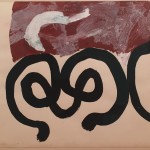 Untitled
Untitled
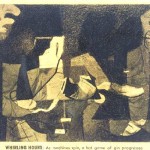 Whirling Hours
Whirling Hours
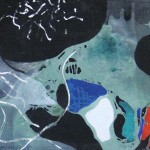 Nallard
Nallard
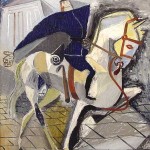 Mounted Policeman (New York Policeman)
Mounted Policeman (New York Policeman)
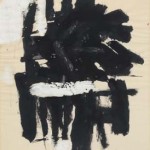 Untitled
Untitled
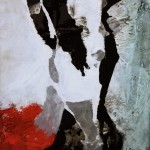 Hoslem
Hoslem